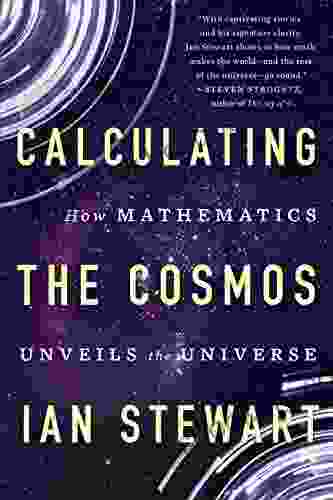Uncover the Secrets of Invisibility: An Exclusive Excerpt from "How to Be Invisible" by J.J. Anderson


4.5 out of 5
| Language | : | English |
| File size | : | 514 KB |
| Text-to-Speech | : | Enabled |
| Enhanced typesetting | : | Enabled |
| X-Ray | : | Enabled |
| Word Wise | : | Enabled |
| Print length | : | 321 pages |
| Screen Reader | : | Supported |
In the realm of espionage, warfare, and personal privacy, the concept of invisibility has captivated our imaginations for centuries. From the mythological cloak of Hermes to the futuristic stealth technologies, the ability to conceal oneself from sight has been pursued relentlessly.
In his groundbreaking book, "How to Be Invisible," author J.J. Anderson delves into the fascinating world of invisibility, unraveling its history, techniques, and hidden applications. Through a series of captivating chapters, Anderson guides readers on an extraordinary journey, exploring the boundaries of perception and questioning the very nature of visibility.
In this exclusive excerpt, we unveil a glimpse into the captivating world of invisibility, offering a tantalizing taste of the insights and revelations found in Anderson's seminal work.
Chapter 1: The Allure of Invisibility
Invisibility has always held a profound allure, captivating our minds with its potential for both good and evil. It offers the promise of protection, secrecy, and freedom, yet it also carries the risk of deception, manipulation, and surveillance. Throughout history, the pursuit of invisibility has driven countless individuals and organizations to push the boundaries of science, technology, and human ingenuity.
Anderson traces the origins of invisibility back to ancient mythology and folklore, where it was often associated with gods, spirits, and magical beings. In Greek mythology, Hades, the god of the underworld, possessed an invisibility helmet that allowed him to move undetected among mortals and immortals alike. Invisibility played a pivotal role in countless legends and tales, from the Trojan War to the adventures of King Arthur.
As human civilization progressed, the quest for invisibility shifted from the realm of myth into the realm of science and technology. In the early 19th century, scientists discovered the phenomenon of electromagnetism, which laid the foundation for the development of camouflage and other forms of optical illusion.
Chapter 2: The Science of Deception
Invisibility is not simply about vanishing into thin air but about controlling the way light interacts with an object. Anderson explores the various scientific principles and techniques that enable objects to become invisible, including:
- Refraction: Bending light waves to alter the perceived shape or position of an object.
- Reflection: Using mirrors or other reflective surfaces to redirect light away from an object, making it appear invisible.
- Absorption: Absorbing light waves into a material, preventing them from reflecting off the object.
- Metamaterials: Engineered materials that manipulate light waves in unprecedented ways, enabling objects to become invisible at specific wavelengths.
Anderson meticulously explains these concepts, providing clear examples and illustrations to help readers grasp the complexities of invisibility science.
Chapter 3: The Art of Disguise
Beyond scientific techniques, Anderson also explores the art of disguise, a timeless method of achieving invisibility. From the elaborate costumes of ancient spies to the cutting-edge prosthetics used by modern intelligence agencies, disguise has evolved into a sophisticated craft.
Anderson shares the secrets of effective disguise, including:
- Makeup and prosthetics: Altering facial features and skin tone to transform one's appearance.
- Clothing and accessories: Wearing disguising clothing and accessories to blend into different environments.
- Behavior and mannerisms: Adopting the behaviors, speech patterns, and body language of the individuals or groups one seeks to infiltrate.
Anderson emphasizes that successful disguise requires not only physical transformation but also a deep understanding of human psychology and social dynamics.
Chapter 4: The Ethical Implications
As the pursuit of invisibility intensifies, so too do the ethical implications. Anderson raises thought-provoking questions about the potential misuse of invisibility technology and the erosion of privacy.
He explores the concerns surrounding the use of invisibility for military and espionage purposes, as well as the potential for criminals and terrorists to exploit the technology for nefarious purposes. Anderson also examines the impact of invisibility on personal relationships, trust, and the very fabric of human society.
In his thought-provoking , Anderson leaves readers with a profound message: invisibility is not merely about hiding from the world but about controlling how the world sees us. It is a power that can both empower and corrupt, and its ethical implications must be carefully considered.
Through his meticulous research and captivating writing style, J.J. Anderson has crafted an indispensable guide to the fascinating world of invisibility. "How to Be Invisible" is a must-read for anyone seeking to understand the science, history, and societal implications of this elusive and extraordinary phenomenon.
Free Download your copy of "How to Be Invisible" today and embark on an extraordinary journey into the realm of invisibility!
4.5 out of 5
| Language | : | English |
| File size | : | 514 KB |
| Text-to-Speech | : | Enabled |
| Enhanced typesetting | : | Enabled |
| X-Ray | : | Enabled |
| Word Wise | : | Enabled |
| Print length | : | 321 pages |
| Screen Reader | : | Supported |
Do you want to contribute by writing guest posts on this blog?
Please contact us and send us a resume of previous articles that you have written.
 Book
Book Novel
Novel Page
Page Chapter
Chapter Text
Text Story
Story Genre
Genre Reader
Reader Library
Library Paperback
Paperback E-book
E-book Magazine
Magazine Newspaper
Newspaper Paragraph
Paragraph Sentence
Sentence Bookmark
Bookmark Shelf
Shelf Glossary
Glossary Bibliography
Bibliography Foreword
Foreword Preface
Preface Synopsis
Synopsis Annotation
Annotation Footnote
Footnote Manuscript
Manuscript Scroll
Scroll Codex
Codex Tome
Tome Bestseller
Bestseller Classics
Classics Library card
Library card Narrative
Narrative Biography
Biography Autobiography
Autobiography Memoir
Memoir Reference
Reference Encyclopedia
Encyclopedia J E Reed
J E Reed Jomike Tejido
Jomike Tejido Ingrid Betancourt
Ingrid Betancourt Huan Hsu
Huan Hsu Ted Sandling
Ted Sandling William Schoell
William Schoell Tom Stoppard
Tom Stoppard Rachel Smith
Rachel Smith Jamie Reed
Jamie Reed Mordechai Bar On
Mordechai Bar On Stewart D Friedman
Stewart D Friedman Larry Schweikart
Larry Schweikart J Marks
J Marks Laurence J Brahm
Laurence J Brahm Mary White Rowlandson
Mary White Rowlandson Inna Z Khazan
Inna Z Khazan Mike P Mckeever
Mike P Mckeever Richard Lemaster
Richard Lemaster Isabel Farrell
Isabel Farrell Ibram X Kendi
Ibram X Kendi
Light bulbAdvertise smarter! Our strategic ad space ensures maximum exposure. Reserve your spot today!
 Andres CarterFollow ·14.5k
Andres CarterFollow ·14.5k Terry PratchettFollow ·6.4k
Terry PratchettFollow ·6.4k Mark TwainFollow ·8.9k
Mark TwainFollow ·8.9k Tyrone PowellFollow ·17.2k
Tyrone PowellFollow ·17.2k Anthony WellsFollow ·4.2k
Anthony WellsFollow ·4.2k Jett PowellFollow ·14.1k
Jett PowellFollow ·14.1k Jay SimmonsFollow ·10.7k
Jay SimmonsFollow ·10.7k Ernesto SabatoFollow ·18.5k
Ernesto SabatoFollow ·18.5k

 Luke Blair
Luke Blair101 Amazing Facts About Australia: A Journey Through the...
A Literary Expedition Unveiling the Treasures...
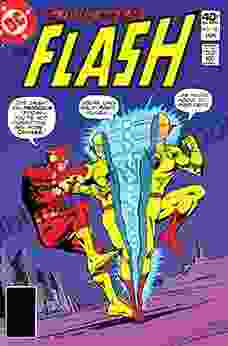
 Harry Hayes
Harry HayesWitness the Velocity and Legacy of the Scarlet Speedster:...
Delve into the Lightning-Charged...
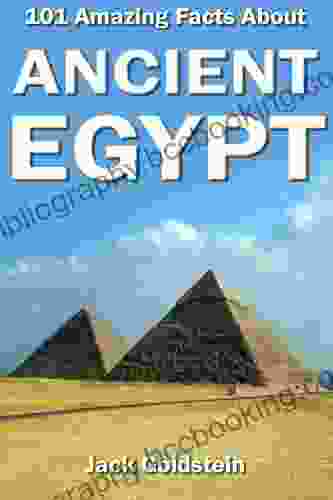
 Stan Ward
Stan Ward101 Amazing Facts About Ancient Egypt: Unraveling the...
: A Timeless Realm of Wonder Ancient Egypt, a...
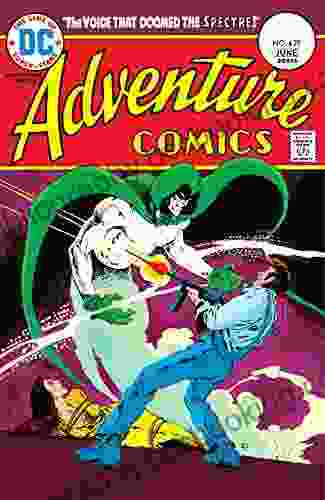
 Stephen King
Stephen KingEscape into Adventure: Unveil the Secrets of Adventure...
In the annals of comic book history,...
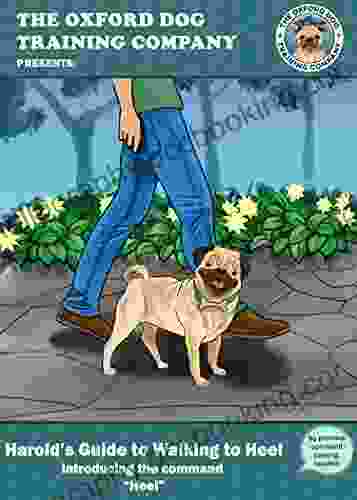
 Forrest Blair
Forrest BlairThe Oxford Dog Training Company Presents: A Holistic...
In the realm of dog...
4.5 out of 5
| Language | : | English |
| File size | : | 514 KB |
| Text-to-Speech | : | Enabled |
| Enhanced typesetting | : | Enabled |
| X-Ray | : | Enabled |
| Word Wise | : | Enabled |
| Print length | : | 321 pages |
| Screen Reader | : | Supported |









